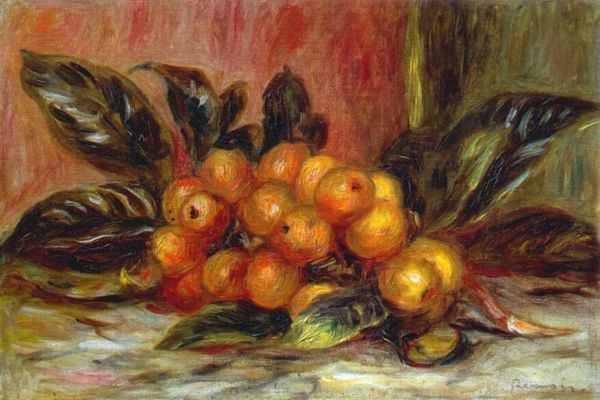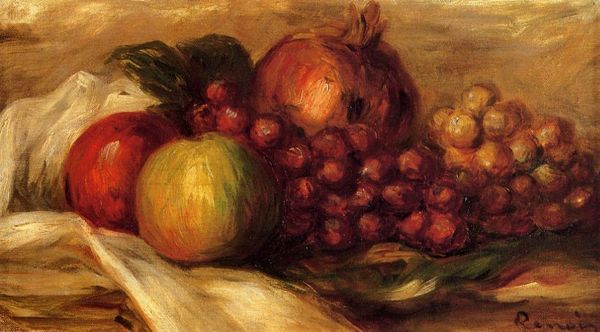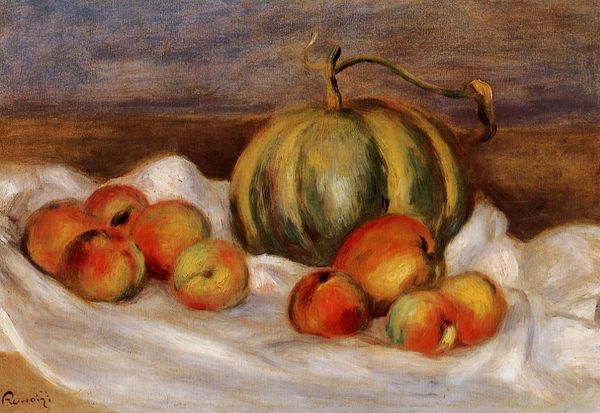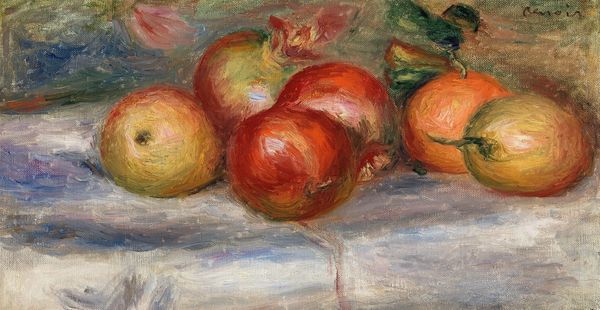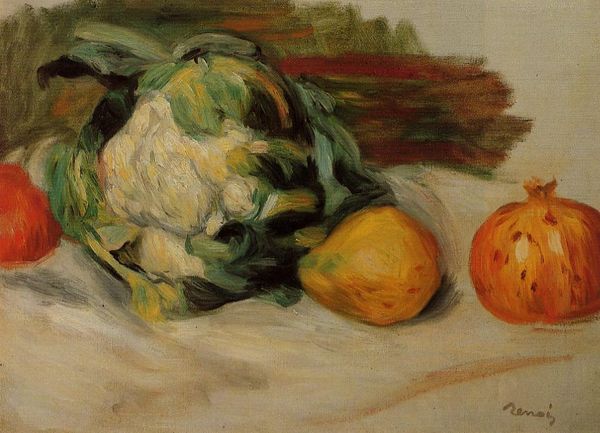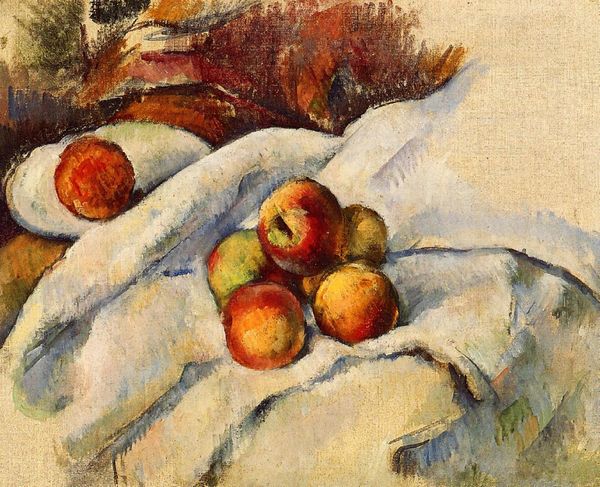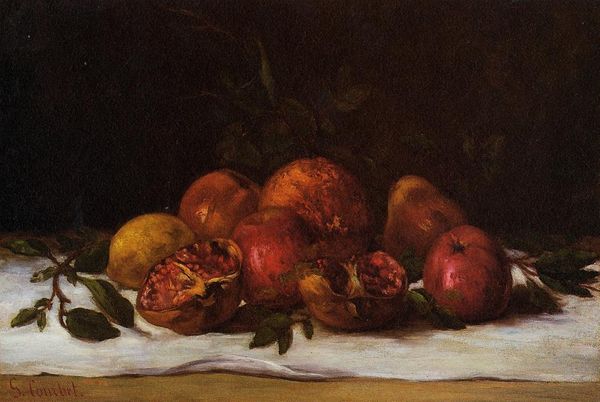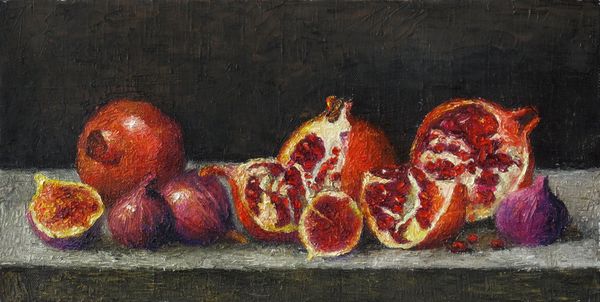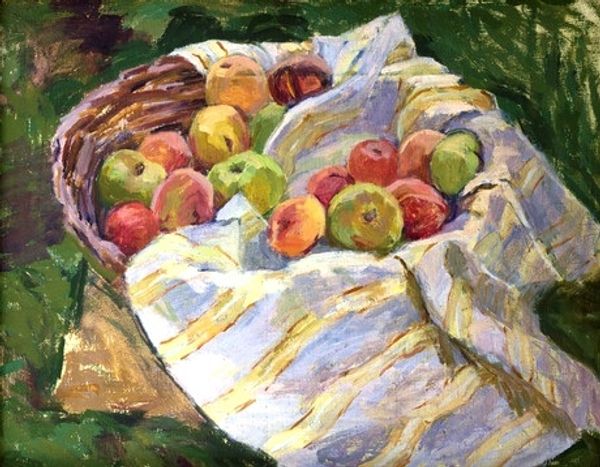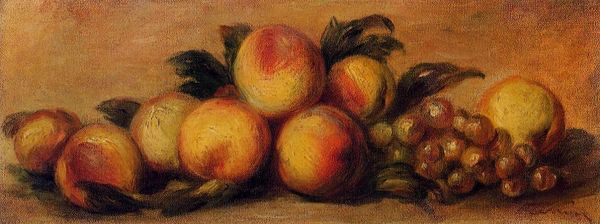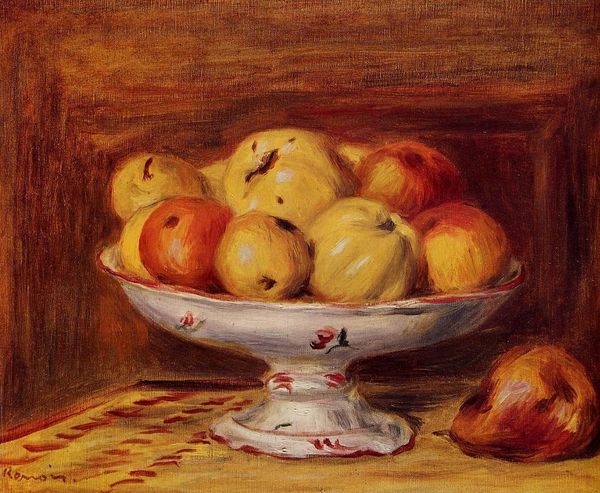
painting, oil-paint
#
still-life
#
painting
#
impressionism
#
oil-paint
#
oil painting
#
fruit
Dimensions: 29.85 x 40.32 cm
Copyright: Public domain
Curator: Welcome. Here we have Pierre-Auguste Renoir’s "Pears and Apples," a still life painted around 1890. It resides in a private collection. What's your first impression? Editor: A certain vibrancy jumps out, doesn’t it? The rough, visible brushstrokes give an impression of quick, almost spontaneous execution, revealing the physicality of paint itself. Curator: Absolutely. The composition strikes me with its deliberate arrangement of forms. The fruit—the pears and apples—are grouped centrally on what appears to be a loosely draped cloth. Renoir is playing with shapes: the roundness of the fruit versus the angular folds of the fabric. Note also the warm hues used to model form, with a strategic placement of dark values underneath each object to suggest a sort of tangible mass. Editor: And the texture! You can almost feel the thick impasto of the oil paint. I'm curious about the setting—where and when did Renoir source these apples and pears? Is it a commentary on bourgeois domesticity, these massed produced and traded food goods laid casually atop cheap fabric for its painting? And is this just for him, or will it become part of some wealthy client's eating room decor? Curator: It is in these later works like 'Pears and Apples' that we can identify his increased use of vibrant colors alongside soft textures and loosely defined contours which characterize late Impressionism, thus eschewing stringent representation in favor of eliciting more intimate affective responses. There are no stark outlines; shapes bleed into each other in subtle and delicate ways. Editor: Bleed they do. I see labor hidden here too, Curator. Someone harvested this fruit, someone else wove the fabric of that cloth, each process integral. That crimson background also seems unfinished or hastily executed: suggesting haste and a sense of getting a product turned over as quick as can be. Curator: Indeed. Renoir’s ability to marry visual immediacy with calculated form truly distinguishes “Pears and Apples” for its formal brilliance, as a case study into pictorial structure, which brings us beyond simple realism into impressionistic interpretation Editor: Right, it encourages me to think critically about production: about cultivation, distribution, and about how still life perpetuates commercial relations disguised as art. Thanks to him, this picture helps us unpack what often gets conveniently forgotten. Curator: And from an interpretive level, a close examination reveals something universal to everyone regarding visual harmony that goes beyond social particulars too. Editor: True, that he makes them almost appetizing adds to their aura.
Comments
No comments
Be the first to comment and join the conversation on the ultimate creative platform.

